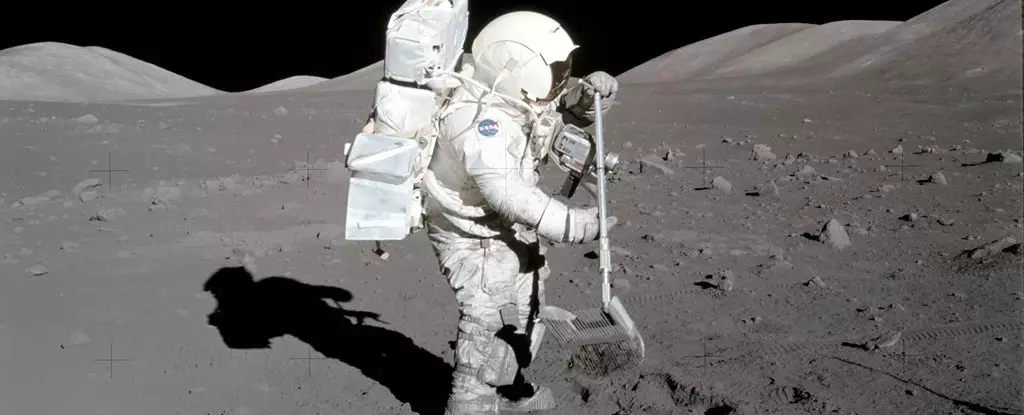The US National Academies of Sciences, Engineering, and Medicine suggest that men should consume 3.7 litres of water per day, while women should consume 2.7 litres. When considering a crew of three individuals embarking on a 3-week trip to the Moon, this translates to approximately 189 litres of water. To put this into perspective, it amounts to roughly 189 kilograms of water. This poses a significant logistical challenge for long-duration space missions, as the water needs to be carried rather than recycled. However, researchers from the US Naval Research Laboratory (NRL) have recently made a groundbreaking discovery that could potentially alleviate this issue.
During the Apollo program, a total of 382 kilograms of lunar rock samples were brought back from the Moon. Taking into account the weight of these rocks, which is equivalent to almost five individuals like myself, scientists have been examining these samples in search of solutions. Among them, a research team from NRL, led by Katherine D. Burgess, along with Brittany A. Cymes and Rhonda M. Stroud, have discovered promising evidence of hydrogen in the lunar rocks. This hydrogen, when combined with lunar oxygen, could potentially serve as a vital resource for future lunar explorers.
One of the primary objectives of the NRL research team was to gain insights into the source of water on the Moon and its formation. As future lunar exploration, particularly the establishment of permanent lunar bases, heavily relies on utilizing lunar resources, comprehending the origin and retention of water becomes crucial. The team utilized transmission electron microscopy to delve into lunar sample 79221. This technique employs a particle beam of electrons to examine specimens and generate highly magnified images. The team specifically focused on the grains of minerals apatite and merrillite, wherein they stumbled upon traces of ‘space’ weathering caused by the solar wind. The solar wind, racing outward from the Sun at speeds up to 1.6 million km per hour, consists of charged particles.
Within the vesicles – small cavities created by cooled lava – of the lunar rock samples, the research team discovered signatures of hydrogen. This finding confirms the trapping of solar wind in detectable quantities, presenting a potential reservoir that could be accessible to future lunar explorers. Hydrogen itself is an immensely valuable resource, capable of enhancing various aspects of space exploration. What truly sparks excitement about this discovery is the possibility that it could unravel the mystery surrounding the origins of lunar water. It may very well be the consequence of chemical interactions between the solar wind and lunar rocks. By gaining a comprehensive understanding of the origin of lunar water, we can effectively harness its potential to venture further into the depths of the Solar System.
This groundbreaking discovery by the NRL research team holds immense significance for future lunar missions and the establishment of lunar bases. The potential availability of a water source on the Moon could drastically reduce the amount of water that needs to be transported from Earth. Accessible hydrogen on the lunar surface could serve multiple purposes, including drinking water for astronauts, production of rocket propellant, and utilization in life support systems. Furthermore, understanding the formation of lunar water would open doors for enhanced exploration of other celestial bodies within our Solar System.
The NRL research team’s findings have shed light on a potential solution to the challenge of water carriage on lunar missions. By discovering traces of hydrogen in lunar rocks, they have confirmed the existence of a viable resource that could be harnessed for future lunar exploration. This breakthrough could revolutionize our approach to space travel and enable us to venture deeper into the mysteries of our Solar System. With further research and advancements in technology, we may finally uncover the full extent of the water resources available on the Moon, fueling our ambitions for space exploration.


Leave a Reply